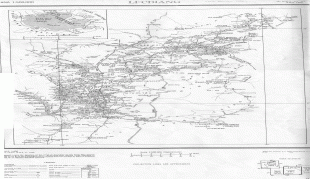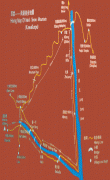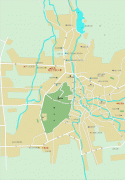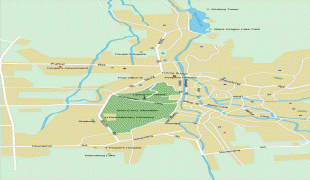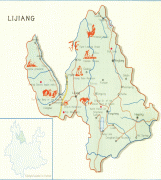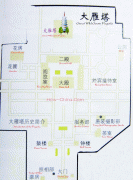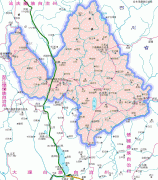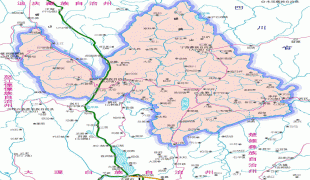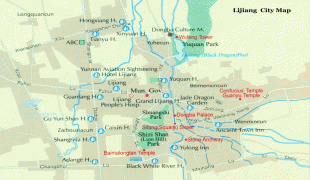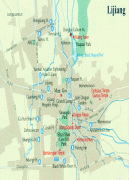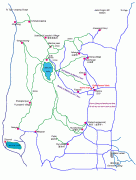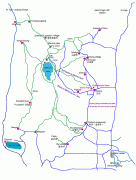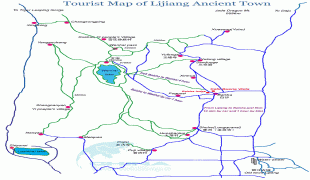Lijiang
100,000 years ago, the Lijiang people of the late Paleolithic sapiens were active here. The discovery of cave paintings in the Jinsha River Valley and numerous new stone tools, bronzes and ironsmiths prove that Lijiang is one of the important areas of ancient human activities in southwest China.
The Baisha Old Town was the political, commercial and cultural center for the local Naxi people and other ethnic groups for 400 years from the year 658 AD to 1107AD. The Dabaoji Palace of the Baisha Fresco, very close to the Baisha Naxi Hand-made Embroidery Institute, was built in the year 658 AD in the Tang dynasty (618 AD to 907 AD).
In ancient times, the Baisha Old Town used to be the center of silk embroidery in the southwest of China and the most important place of the Ancient Southern Silk Road, also called the Ancient Tea and Horse Road or Ancient tea route. The Ancient Southern Silk Road started from Burma, crossed Lijiang, Shangri-La County, Tibet, journeyed through Iran, the Fertile Crescent and ultimately to the Mediterranean Sea.
The Kingdom of Lijiang submitted to Khubilai Khan as he led his troops against the Dali kingdom in 1253. Though the kingdom was incorporated into the Mongol empire then the Yuan dynasty, it was given the status of tusi, or indigenous office, which gave autonomy to the local Naxi rulers. During the Ming dynasty, the Naxi were one of the few border peoples to support the Ming immediately. As the Naxi helped the Ming expand in Southwest China the ruler family was given the title of Mu. During this period the Kingdom of Lijiang was able to expand into Sichuan and Tibet bringing many Tibetan peoples into its territory as well as their cultural and religious influence. It was under the rule of the Naxi ruling house of the Mu family during the Yuan (not yet named Mu), Ming, and Qing dynasties. The Mu "held this position until 1723, when Lijiang became directly incorporated under the authority of the Qing central government."
In 2002 Lijiang City was established, replacing the former Lijiang Naxi Autonomous County.
Map - Lijiang
Map
Country - China
 |
 |
| Flag of China | |
Modern Chinese trace their origins to a cradle of civilization in the fertile basin of the Yellow River in the North China Plain. The semi-legendary Xia dynasty in the 21st century BCE and the well-attested Shang and Zhou dynasties developed a bureaucratic political system to serve hereditary monarchies, or dynasties. Chinese writing, Chinese classic literature, and the Hundred Schools of Thought emerged during this period and influenced China and its neighbors for centuries to come. In the third century BCE, Qin's wars of unification created the first Chinese empire, the short-lived Qin dynasty. The Qin was followed by the more stable Han dynasty (206 BCE–220 CE), which established a model for nearly two millennia in which the Chinese empire was one of the world's foremost economic powers. The empire expanded, fractured, and reunified; was conquered and reestablished; absorbed foreign religions and ideas; and made world-leading scientific advances, such as the Four Great Inventions: gunpowder, paper, the compass, and printing. After centuries of disunity following the fall of the Han, the Sui (581–618) and Tang (618–907) dynasties reunified the empire. The multi-ethnic Tang welcomed foreign trade and culture that came over the Silk Road and adapted Buddhism to Chinese needs. The early modern Song dynasty (960–1279) became increasingly urban and commercial. The civilian scholar-officials or literati used the examination system and the doctrines of Neo-Confucianism to replace the military aristocrats of earlier dynasties. The Mongol invasion established the Yuan dynasty in 1279, but the Ming dynasty (1368–1644) re-established Han Chinese control. The Manchu-led Qing dynasty nearly doubled the empire's territory and established a multi-ethnic state that was the basis of the modern Chinese nation, but suffered heavy losses to foreign imperialism in the 19th century.
Currency / Language
| ISO | Currency | Symbol | Significant figures |
|---|---|---|---|
| CNY | Renminbi | ¥ or 元 | 2 |
| ISO | Language |
|---|---|
| ZH | Chinese language |
| UG | Uighur language |
| ZA | Zhuang language |






